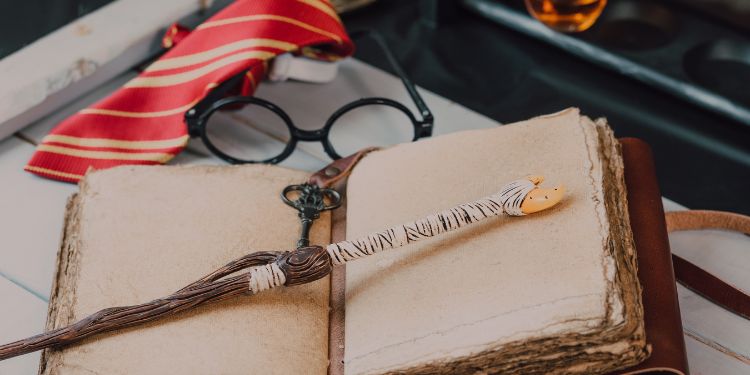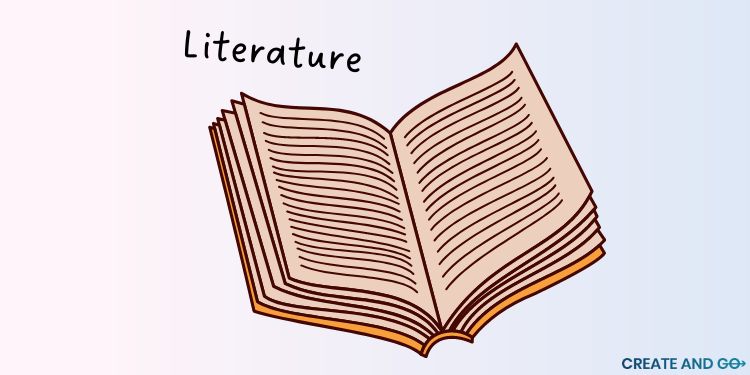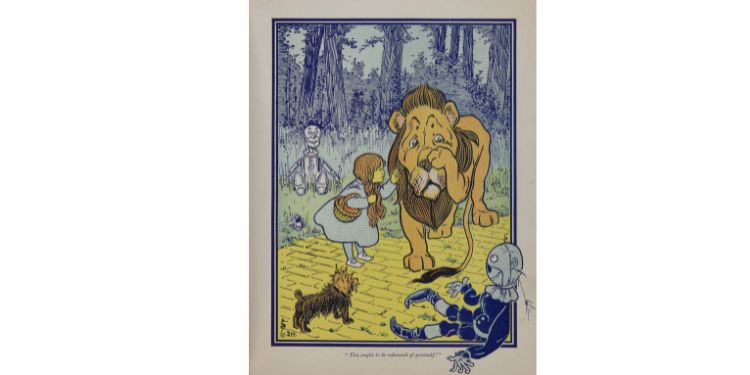Foreshadowing is a powerful literary technique that writers employ to hint at future events in their storytelling, creating suspense and keeping readers engrossed.
It’s like leaving breadcrumbs that lead your reader through the unfolding narrative, piquing their curiosity and heightening their engagement.
This article will explore over 20 different foreshadowing examples to help you better understand how it can be used in writing to craft compelling and intriguing narratives.
So get ready to uncover the subtle art of foreshadowing to enrich your storytelling skills.
What is Foreshadowing?

Foreshadowing is a literary device used by writers to hint at future events in their storytelling.
They often come in the form of indirect or subtle clues that can be interpreted as a warning or indicator of what’s to come.
When writers foreshadow events without giving away too much information, they can greatly enhance the character development and plot of their story.
It also helps to create suspense and anticipation throughout the narrative.
Types of Foreshadowing With Examples
There are several different types of foreshadowing that authors can employ. The two overarching categories include:
- Direct foreshadowing: This simply states what’s to come in the story by explicitly revealing what’s to come.
- Indirect foreshadowing: This provides subtle hints that readers must decipher by themselves to work out upcoming events.
It’s indirect foreshadowing that is often more effective than direct foreshadowing as it creates suspense and keeps readers engaged as they try to interpret the hints.
Additionally, there are some other, more specific types of foreshadowing, including:
Red Herring
A red herring is a misleading clue that diverts the reader’s attention away from the truth. This is an effective way to throw readers off and create suspense in your writing.
For example, in the classic mystery novel, Agatha Christie’s And Then There Were None, we are given a red herring when one of the characters is falsely accused of murdering a fellow guest. As readers continue to read, they’ll realize that this accusation was untrue and used as a ploy to misdirect them away from the real killer.
Chekhov’s Gun
Chekhov’s gun is a plot device named after Russian playwright Anton Chekhov, which refers to an important object mentioned early in the story that will eventually become relevant later on. It’s a great way to create tension and anticipation in your writing.
Take the 2015 sci-fi film, Ex Machina, for example. We meet Nathan, a genius programmer who has created an advanced artificial intelligence named Ava. In their interactions, we learn that Nathan has been teaching Ava to dance, which seems irrelevant at first but becomes hugely significant when it’s revealed that she was using this skill as a means of escape.
Flashbacks
Flashbacks are a type of foreshadowing that provide insights into past events that are relevant to the current plot. These can help readers to better understand characters, their struggles or motivations, as well as the truth behind certain events in the story.
In J.K Rowling’s Harry Potter series, readers are given flashbacks to Harry’s childhood as well as his parents’ past. This helps us better understand his mission, the backstory behind Voldemort, and why he must defeat him.

Flashforward
A flashforward is a scene set in the future that provides clues about events yet to come in the plot. This can be an effective technique for creating suspense and keeping readers hooked as they anticipate what’s to come.
For example, in the 2008 action movie, Indiana Jones and the Kingdom of the Crystal Skull, we’re given a flashforward to Indy and his companion being chased by a giant alien. This serves as an exciting teaser that has readers eagerly awaiting how they will escape this predicament.
Situational Foreshadowing
This type of foreshadowing uses environment or setting to hint at future events. It can be used to create a mood, indicating impending danger or other important aspects about the story.
One classic example of situational foreshadowing is found in the horror movie, The Shining. Throughout the film, we are presented with shots of a lonely and deserted Overlook Hotel which creates an eerie feeling that something sinister is about to occur. This type of foreshadowing helps build suspense as we move towards the climax of the story.
Symbolism
This type of foreshadowing uses symbols to hint at upcoming events in the story. It can be used to invoke certain emotions or feelings, as well as give readers an idea of what will happen later on in the narrative.
In the 2005 fantasy film, The Chronicles of Narnia: The Lion, The Witch and The Wardrobe, we are presented with symbols that hint at upcoming events in the plot. For instance, throughout the movie, we’re shown images of Aslan surrounded by snow which foreshadows his eventual resurrection from death.
Prophecy
This type of foreshadowing is the most direct and explicit. It involves predicting or foretelling what will happen in the near future. Prophecies are often used in fantasy and sci-fi stories as a form of plot device to introduce conflict, stakes, and suspense.
One famous example of prophecy being used for storytelling purposes can be found in JRR Tolkien’s Lord of the Rings trilogy. Here, readers are presented with a prophecy that tells of a hero who will eventually save Middle-earth from destruction.
This serves as an exciting and suspenseful plot device that keeps readers engaged throughout the series.
15 Foreshadowing Examples
Now that you understand what foreshadowing is and how it works, let’s look at a few examples of how this technique has been used in a variety of contexts and mediums.
Foreshadowing Examples in Literature

Here are a few of the most iconic examples of foreshadowing in literature in some of the world’s classic works:
1. Macbeth by William Shakespeare
In Macbeth, there are multiple instances of foreshadowing to indicate the tragedy that’s unfolding.
At the very beginning, the three witches’ predictions foreshadow the future events in the play: Macbeth’s eventual kingship, his death, and Banquo’s cursed lineage.
Additionally, we’re also given several warnings from other characters about Macbeth’s ambition and thirst for power that come back later in the story.
2. The Great Gatsby, by F. Scott Fitzgerald
In The Great Gatsby, the protagonist visits a man named Meyer Wolfsheim who runs a shady business operation that involves illegal gambling and racketeering.
This visit foreshadows Gatsby’s eventual involvement in criminal activity later in the novel.
3. Pride and Prejudice, by Jane Austen
In the beginning of Pride and Prejudice, the plot is set in motion when Mr. Darcy proposes marriage to Elizabeth Bennet despite his initial dislike of her.
This foreshadows their eventual reconciliation and marriage. It also shows that, despite their differences and initial impressions of each other, they eventually fall in love.
4. Hamlet by William Shakespeare
In the first scene of Hamlet, Horatio warns another character that something horrible is about to happen: “Something is rotten in the state of Denmark.”
This foreshadows all of the tragedy and horror that follows later in the play. Not only does it point to specific events such as Hamlet’s father’s murder and subsequent revenge, but it also hints at larger themes of corruption and decay that run throughout the play.
Foreshadowing Examples in Film

Examples of foreshadowing can also be found frequently in films. Let’s take a look at some of the most iconic examples:
1. Psycho (1960)
In Alfred Hitchcock’s classic horror film, Psycho, we are presented with a number of scenes that foreshadow the eventual murder of Marion Crane.
One example is when Marion steals money from her boss and heads out on the run; at one point, she passes a highway sign that reads “No Vacancy.” This is a stark reminder of the vacancy at the Bates Motel where Marion will eventually meet her demise.
2. The Wizard of Oz (1939)
In the beginning of The Wizard of Oz, we meet three characters who foreshadow what’s to come in the story.
The Scarecrow is an obvious metaphor for Dorothy’s quest for knowledge and understanding, while the Tin Man represents her need for a heart and compassion. Finally, the Cowardly Lion symbolizes her courage as she takes on adventures and obstacles in her journey.

3. The Godfather (1972)
In The Godfather, multiple scenes are used to foreshadow Michael Corleone’s transition from a reluctant outsider to a powerful Mafia Don.
In the beginning of the movie, he is seen playing with his younger brother’s toy soldiers which foreshadows his eventual involvement in organized crime and leadership role within the Corleone family.
4. The Sixth Sense (1999)
In The Sixth Sense, we are presented with a number of clues that foreshadow the reveal at the end of the movie.
When Cole Sear (the main character) is talking to Malcolm Crowe (a child psychologist trying to help him), he mentions that he sees “dead people.” This line of dialogue foreshadows the reveal that Malcolm is actually dead himself.
5. The Matrix
Early on in the movie, we’re given a clue that Neo is the chosen one when Trinity tells him “The answer is out there, Neo. It’s looking for you and it will find you if you want it to.”
This foreshadows his eventual discovery of the truth about reality and hints at what lies ahead for him on his journey.

Foreshadowing Examples in Television
Foreshadowing can also be found frequently in television shows, such as:
1. Breaking Bad
Throughout the show, there are several scenes and plot points that foreshadow the eventual downfall of Walter White.
In one scene, he’s seen playing a game of chess with his son which is symbolic of him trying to outwit those around him in order to achieve his goals. This hints at the fact that his reckless actions will eventually catch up with him.
2. Game of Thrones
In the first season of Game of Thrones, there is a scene where Ned Stark warns his children not to trust anyone – especially those closest to them.
This foreshadows the events that unfold as the series progresses and we learn just how treacherous and dangerous the political landscape can be.
It shows that Ned’s warnings were correct and illuminates one of the major themes in the show – that no one is to be trusted.
3. The Sopranos
Throughout the show, Tony Soprano is shown to be on edge and paranoid about his safety – a feeling that’s reinforced by his nightmares.
This foreshadows the dangers that he will face later in the series, as well as the consequences of living a life of crime. It also underlines one of the major themes in the show – that nothing good comes from a life of crime.
Foreshadowing Examples in Video Games

Video games offer a unique opportunity for incorporating foreshadowing techniques into their narratives. Here are a few examples of how this has been used effectively:
1. The Last of Us
Throughout The Last of Us, there is an obvious example of direct foreshadowing when we are introduced to Ellie, who tells us that she is immune to a virus that has devastated humanity.
This foreshadows her importance later on in the story as she works with Joel to save mankind.
2. Red Dead Redemption 2
In Red Dead Redemption 2, there are numerous scenes with dialogue foreshadowing that give players a hint at the events of the game’s ending.
For instance, there’s a scene in which Dutch talks about how he never wanted to hurt anyone, hinting at his eventual downfall and death. Additionally, Arthur and other characters are constantly talking about their own mortality and the consequences of their actions.
These scenes foreshadow both the game’s ending as well as its major themes – that even the most hardened criminals are not immune to their own mortality.
3. Uncharted 4: A Thief’s End
In the game, Uncharted 4, Nathan Drake’s journey leads him to an island where he discovers information about his ancestor, Sir Francis Drake.
This foreshadows the revelation that Nathan and his brother Sam are descended from a long line of adventurers.
5 Tips to Use Foreshadowing Effectively
Now that you understand what foreshadowing is, let’s discuss how it can be used effectively in your writing. Here are a few tips to get started:
- Start off with subtle hints. If the reader notices the hidden clues too early, it can ruin the surprise and dampen the suspense.
- Increase intensity gradually. Start off with hints that are barely noticeable to later reveal more concrete evidence. This gives your readers a chance to piece together their own theories while still leaving room for surprises.
- Make sure it’s relevant. Foreshadowing should be used sparingly and only when necessary. If it has no impact on the story, it should be avoided because it can feel like a distraction to your readers.
- Leave some things unknown. Don’t give away too much information when foreshadowing events. This will keep your readers guessing and ensure that they stay engaged in the story.
- Pay attention to details. The clues you use should be subtle, but relevant to the story. Even small details can have a big impact on your readers if they are used effectively.
Other Popular Literary Devices
Foreshadowing is just one of the many literary devices used in writing. Here are some other popular ones:
- Chiasmus: This is a figure of speech that inverts the order of words in two parallel phrases.
- Alliteration: This is the repetition of consonant sounds at the beginning of multiple words or syllables.
- Anadiplosis: This is when a phrase or word from the end of one sentence is repeated at the beginning of the next.
- Colloquialism: This is the use of informal words or phrases that are commonly used in everyday speech.
- Imagery: This is the use of vivid language to describe a scene or person and evoke certain emotions in the reader.
- Personification: This is when an inanimate object or idea is given human traits or characteristics.
- Hyperbole: This is an extreme exaggeration that is used to create emphasis and draw attention to a point.
- Juxtaposition: This is when two contrasting ideas are placed side by side to emphasize their differences.
- Anaphora:This is the repetition of a word or phrase at the beginning of successive clauses.
- Synecdoche: This is when a part of something is used to represent the whole.
By understanding and mastering these literary devices, you can effectively create compelling stories that pull your readers in and leave them wanting more!
FAQs on Foreshadowing Examples
Summary for Examples of Foreshadowing
Writers foreshadow future events to create suspense, dramatic tension, character development, and intrigue in their stories.
You can do this through direct and indirect foreshadowing.
By understanding the different types of foreshadowing, you can start to identify foreshadowing and predit plot twists before they happen.
Being able to use the tips in this article will help you effectively use this literary device to craft compelling narratives that captivate your readers.
Keep these tips and examples of foreshadowing in mind when writing your own stories – they will be sure to keep your audience engaged and wanting more!